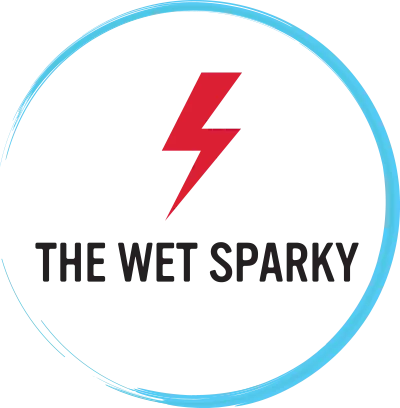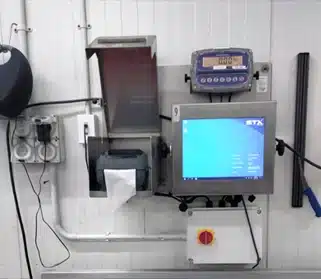
General Electrical
Any equipment that needs electricity to function falls in our General Electric category.
We offer the following general services, if it is not listed, please feel free to contact us to get an assessment scheduled.
Test and Tag:
Electrical Testing and Tagging is the process by which portable electrical appliances are inspected and tested for safety in accordance with the AS/NZS 3760.
Advantages of Having Electrical Equipment Tested and Tagged in Your Home:
- Enhanced Safety: Regular testing and tagging of electrical appliances help identify potential hazards such as faulty wiring, insulation damage, or other defects, reducing the risk of electrical shocks, fires, or other accidents.
- Compliance with Safety Regulations: Ensures that your home adheres to relevant electrical safety standards and local regulations. This is particularly important for rented properties or home-based businesses.
- Prolonged Equipment Lifespan: Testing can detect issues before they cause significant damage, allowing for repairs or maintenance that can extend the life of your appliances.
- Early Detection of Faults: Early identification of electrical faults prevents unexpected breakdowns, ensuring that appliances function reliably and without disruption.
- Insurance Compliance: Many insurance companies require proof of regular electrical safety checks. Testing and tagging provide documented evidence that your home appliances are maintained in safe working order.
- Peace of Mind: Knowing that your electrical equipment has been professionally inspected and tagged gives you confidence in the safety of your home environment.
- Energy Efficiency: Faulty or damaged appliances can consume more power than necessary. Regular testing can identify inefficiencies, helping reduce energy consumption and lower utility bills.
- Prevention of Costly Repairs: Catching minor electrical issues early through testing can prevent them from escalating into major, costly repairs or the need for full appliance replacement.
- Compliance for Home-Based Businesses: If you operate a business from home, testing and tagging help ensure your equipment is safe, minimizing liability and meeting legal obligations.
In summary, testing and tagging electrical equipment in your home or business is a proactive measure that enhances safety, ensures compliance, and extends the life and efficiency of your appliances.
Electrical Plug sockets:
Electrical plug sockets, also known as outlets or wall sockets, are devices that allow electrical appliances to connect to the electrical supply in a building. Here are some key aspects of electrical plug sockets:
Types of Plug Sockets
- Standard Wall Outlets: The most common type used for general-purpose devices, typically rated for 120V or 230V, depending on the region.
- Specialty Outlets: Designed for specific applications, such as:
- RCD Socket outlets: Provides protection against electrical shocks in wet areas (e.g., kitchens, bathrooms).
- AFCI (Arc Fault Circuit Interrupter): Protects against electrical fires by detecting arc faults.
- USB Outlets: Feature integrated USB ports for charging devices without needing a separate adapter.
- Industrial and Commercial Outlets: Heavy-duty sockets designed for high-power equipment, often with locking mechanisms to prevent accidental disconnection.
Electrical Connection and Repairs on Hot Water Cylinders:
Hot water cylinder electrical connections and repairs involve ensuring the safe installation, maintenance, and repair of the heating elements, thermostats, and wiring that power the cylinder. Properly functioning electrical connections are crucial for efficient water heating and safety.
Key Components of an Electric Hot Water Cylinder:
- Heating Element: This is the component responsible for heating the water inside the cylinder. It converts electrical energy into heat.
- Thermostat: Controls the temperature of the water and ensures the heating element turns on and off as needed to maintain the desired temperature.
- Wiring and Electrical Connections: These carry electrical power from your home’s electrical system to the cylinder’s heating element and thermostat.
- Electrical Connection for Hot Water Cylinders:
- Power Supply: Hot water cylinders are typically connected to a dedicated circuit to ensure they receive adequate power and avoid overloading other circuits in the house.
- 240V Circuits: Most electric water heaters require a 240V power supply with its own circuit breaker.
- Proper Wiring: Ensure the correct gauge wire is used, as water heaters draw significant current (usually between 9-15 amps). 2-3 kW hot water cylinders
- Safety Switch or Isolator: An isolating switch must be installed near the cylinder to allow for safe maintenance, repairs, or shutdowns without needing to access the main circuit breaker panel.
- Grounding: For safety, hot water cylinders must be properly grounded or bonded. Grounding prevents electric shocks in the event of a fault or short circuit.
- Timer Controls (Optional): Timers can be installed to control when the heating element turns on, allowing for energy-saving by heating water during off-peak hours.
Common Electrical Issues and Repairs of hot water cylinders:
- Heating Element Failure: The most common issue in electric water heaters. Signs include no hot water or insufficient heating. The element may need to be tested and replaced if damaged or burnt out.
- Testing: A multimeter is used to check for continuity in the heating element. If it’s faulty, the element will need to be replaced.
- Thermostat Malfunction: If the water is too hot, too cold, or fluctuating, it could be a sign of a faulty thermostat. The thermostat should be tested and adjusted or replaced if it’s not functioning properly.
- Tripped Circuit Breaker: A water heater pulling too much power may trip the circuit breaker. This could indicate wiring problems, a faulty heating element, or an overloaded circuit. Replacing or repairing the faulty components usually resolves this issue.
- Loose or Damaged Wiring: Over time, wiring can become loose or damaged due to heat and wear. Regularly checking and tightening electrical connections can prevent shorts or system failure.
- Corroded Electrical Components: Corrosion can occur due to leaks or moisture around the cylinder. Regularly inspecting and replacing any corroded terminals or connectors is essential for safe operation.
Electrical Testing After Repairs:
After making any repairs or adjustments, it’s important to test the system to ensure its functioning properly and safely. This includes checking voltage at the heating element, ensuring the thermostat is operating within set parameters, and confirming that all wiring is secure and free of damage.
Safety Precautions:
- Turn Off Power: Before conducting any repairs or maintenance, turn off the power to the hot water cylinder at the circuit breaker to avoid the risk of electrical shock.
- Check for Leaks: Water and electricity are a dangerous combination. Always inspect the area for leaks before touching the electrical components.
When to Call a Professional:
While homeowners can handle basic maintenance, such as resetting the thermostat or circuit breaker, it’s advisable to hire a licensed electrician for repairs, especially if you encounter:
- Burnt-out wiring
- Persistent tripping of circuit breakers
- Frequent heating element or thermostat failures
- Wiring installations or upgrades
Conclusion:
Electrical connections and repairs on hot water cylinders are crucial to maintaining their efficiency, safety, and longevity. Regular maintenance and timely repairs ensure your cylinder functions properly, delivering consistent hot water while minimizing the risk of electrical hazards. Always prioritize safety and call a licenced registered electrician for any electrical issues or repairs.
Electrical Renovation and repairs
Home renovation and repairs involving electrical circuits require careful planning and adherence to safety standards. Here’s an overview of some key considerations, steps, and best practices:
Planning and Assessment
- Identify Needs: Determine what changes are needed, such as adding new outlets, lighting fixtures, or circuits for appliances.
- Electrical Load Calculation: Assess the total electrical load to ensure the existing system can handle additional demands. This may involve calculating the load of all appliances and fixtures.
Designing the Electrical System
- Layout: Create a plan for the placement of outlets, switches, and lighting. Consider convenience and accessibility.
- Circuit Design: Decide if new circuits are needed and ensure that existing circuits are not overloaded.
- Wiring Type: Choose appropriate wiring based on the circuit requirements and local codes (e.g., NM cable, conduit).
Materials and Tools
- Wiring: Select the correct gauge and type of wire for the application
- Circuit Breakers: Ensure that circuit breakers are appropriately rated for the load and compatible with the electrical panel.
- Test Circuits: We have all the correct test equipment to test the circuit and installation to ensure correct operation and safety.
Testing and Inspection
- Test Circuits: after a new installation has been done, we will conduct installation tests to ensure it is safe and according to the New Zealand wiring rules and standards.
Documentation
- After work has been completed we will provide the correct paperwork and certification that certify our work according to the AS/NZS3000-2007.
Fuse box upgrades or repairs and Switchboard Upgrades and House Re Wires:
Switchboards (also known as a fusebox), are often outdated and neglected for years. The electrical parts are prone to wear and tear over time putting your home and appliances at risk.
Advantages of switchboard (fusebox) upgrades.
- Reducing potential electrical fires.
- Cleaning unsafe circuits.
- Allow additional room for future renovations.
- Labelling all circuits correctly for old setups.
- Save on future cost for any potential accidents.

The Wet Sparky LTD: Your trusted partner for innovative mechanical engineering and electrical solutions.
More than just your local Auckland electrician, we deliver increased profitability through design and innovation. Our technicians provide expert service to enhance your property and keep your operations running smoothly.

